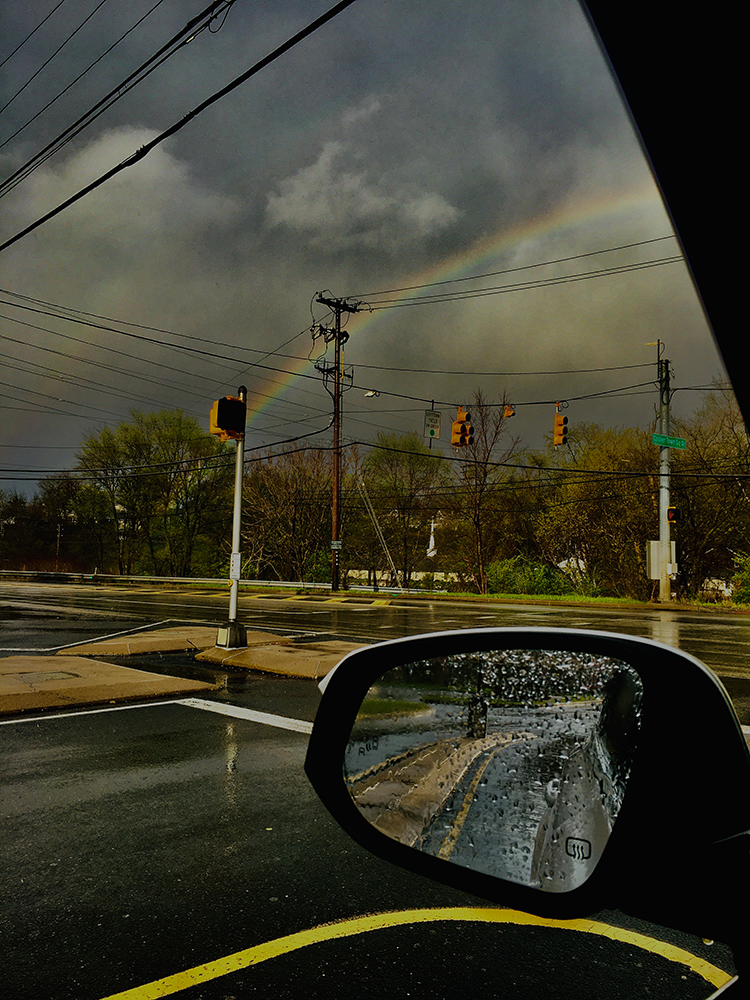
Post-pandemic design and well-being
– from Kevin Bennett, Pittsburgh, 10.05.2020
This is a photo of a sensational rainbow that flashed before my eyes on a recent run to fetch some food and supplies. Unexpected and gone-too-soon, it inspired me think about living in a perfect world, despite the backdrop of our current quarantine existence.
You won’t find Utopia on a map. History is filled with versions of “perfect” worlds, usually based on lofty transformations—economic, scientific, natural, religious, or otherwise—but none are real. Utopia is nothing more than a useful fantasy that helps guide our vision and planning for tomorrow, given the realities of today, and no two people share the exact same outlook. Here are some thoughts.
Wider pathways can give rise to better mobility and mental health. The importance of mobility is sometimes appreciated only in its absence. Social distancing requires space between people in restaurants, workplaces, and walking outside. When we finally emerge from the pandemic, the development of wider pathways could satisfy multiple needs. Improving walkable spaces by widening pathways will make them better for social distancing, improve mental health, and lead to positive physical outcomes. Because exercise begets more exercise, it follows that mobility will play a greater role in personal routines over time. This is good because regular physical activity has a desirable impact on nearly every aspect of psychological well-being.
A small restorative niche is something we all need. For the first five million years of hominid history, our ancestors lived in small, nomadic bands of hunter-gatherers. On average, group size was likely maintained around 100-250 individuals. The human brain evolved to manage social groups no bigger than 150 people. This, however, poses a problem, in that densely populated urban cities often number in the millions.
A restorative niche is a physical place where we can regain our first natures and indulge our biogenic selves. Acting out of character—for example, performing like an extrovert when you are biogenically (i.e., naturally) introverted—imposes physiological costs. It is energetically demanding to be agreeable when you are normally disagreeable, or to act like you are open to new experiences and flexible when you are really structured and remarkably closed-minded. Urban design would benefit from the inclusion of restorative niches that limit capacity to 150 or less.
We should try to satisfy our ancestral preferences for green surroundings. Most of us prefer physical spaces that offer views of green vistas over windowless basements. Recent research linking green spaces and mental health is compelling because it is anchored in evolved habitat preferences. The savanna hypothesis argues that our current habitat preferences were shaped by selection pressures in our ancestral past. Specifically, selection favored preferences, motivations, and decision rules that attract us to resource-rich environments while avoiding environments populated with survival threats and lacking resources. Moving ahead, we have an opportunity to improve well-being through the creative integration of greenery into urban design.
POST(COVID)CARDS
